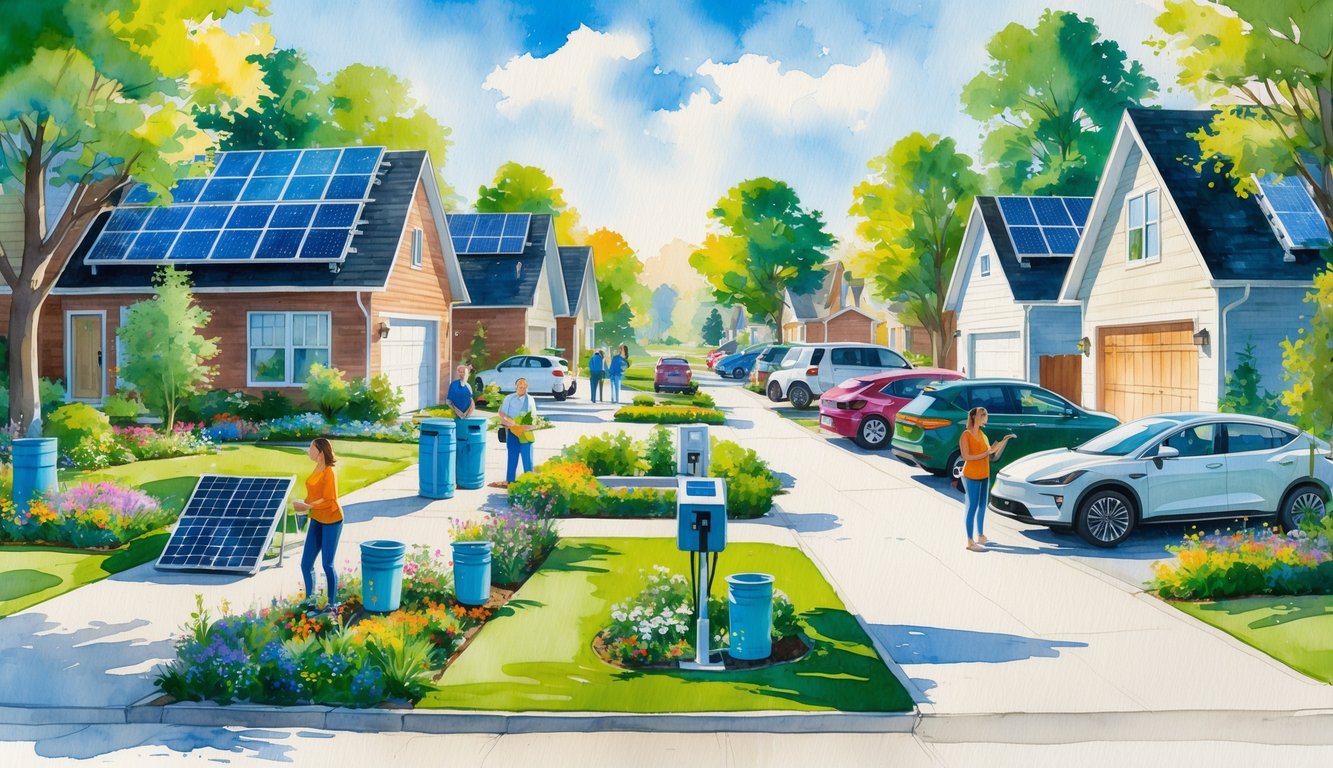
Energy-Efficient Heating and Cooling Solutions
Every time I see my utility bill, I wonder if the air conditioner’s running some scam. Maybe it’s just lazy. I found out even the most stubborn old HVAC system can get replaced with stuff that actually saves you hundreds a year—at least, that’s what every expert tells me, and I’ve bugged a lot of them. Heat pumps? Ubiquitous now. Even people who hate change have one.
Modern Heat Pumps
People talk like heat pumps are magic, but I watched my neighbor’s bill nosedive after he ditched his fossil-era furnace. What’s actually cool: modern heat pumps just move heat around with electricity, barely trying, and your bill drops—even when it’s freezing. But nobody warns you about the weird noises or the fact that you have to size them right.
These new models—ductless mini-splits, variable speed compressors, dual-fuel hybrids—make my old furnace look like a dinosaur. I read that a high-efficiency heat pump can cut heating bills by 30-50%. EPA claims the seasonal coefficient of performance (SCOP) for top units is 3.0 or higher, which is apparently a big deal. But if your insulation sucks, you’re still burning money. Some rebates knock $2,000 or more off, but good luck finding an installer who isn’t booked solid. According to this 2025 green home guide, heat pumps basically became the default this year, even if cranky landlords hate learning new gadgets.
Upgrading to Energy-Efficient HVAC Systems
Let’s just get this out of the way: “energy-efficient” labels? Kind of a joke sometimes. I mean, is anyone really checking if that little ENERGY STAR sticker means your house actually runs better? I’ve watched people swap out an ancient unit, pat themselves on the back, and then—surprise!—they’re still bleeding cash because their ducts are leaky or the “smart” thermostat is collecting dust. I’m not even sure what half these acronyms mean anymore. SEER, HSPF, MERV—am I supposed to memorize these? Variable speed motors, air sensors that know when I’m asleep (creepy, honestly), and filters that cost more than my weekly groceries—sure, they’re all “upgrades.” But if it drops my bill, I’ll put up with the weirdness.
Here’s the weirdest thing I’ve seen so far: this year, HVACs are DM’ing people. Like, my friend’s system literally sent him a notification when his air filter clogged. Not sure if I want my appliances texting me, but if it means I don’t waste a Saturday elbow-deep in YouTube repair videos, I’ll take it. Air quality sensors, predictive maintenance—suddenly, HVAC feels like it caught up to the rest of my tech. But can someone explain why thermostat screens are still hideous? Everything else is sleek and glowy but my wall controller looks like a calculator from 1992. Home show mystery. Maybe I’ll ask after I grab another free pen.
Lighting Upgrades for Sustainable Living
I swear, every time I flip a switch and get that flicker or the bulb buzzes, I wonder why I haven’t gutted every fixture yet. Why are old houses so stubborn? There’s always one light that’s probably been wasting energy since the Clinton era. I guess nobody wants to climb up and swap it until the electric bill shows up and you realize, oh, that’s why I’m broke.
Switching to LED Bulbs
Remember those ugly spiral CFLs? I do. They buzzed, flickered, and had that “don’t break or you’ll die of mercury” warning. So, yeah, I dumped them for LEDs and never looked back. The Department of Energy says LEDs use 75% less power, last 25 times longer—honestly, I believe it. Incandescents should’ve been illegal ages ago.
Supposedly, some utilities hand out rebates for LEDs, but they never mention how hard it is to crack open that packaging or that older lamps sometimes hate new bulbs. LEDs can take a beating—kids, kitchens, porches, whatever. Try that with a glass filament and see how it ends. If you’re not sure, check this out: LED lighting slashes electricity usage, and the new ones don’t have that weird blue haze unless you buy knockoffs that smell like plastic the second you turn them on.
Replacing Incandescent Lighting
If you’re still running incandescents, you must really enjoy sweating and burning money. People tell me, “Oh, but the light is so warm.” Yeah, warm because 90% of the energy is wasted as heat. That’s not cozy, that’s just dumb.
My hardware store says incandescents are basically extinct now (thanks, Energy Independence and Security Act), so if you’ve got a stash in the garage, congrats, you’re hoarding trash. Pulling those out for LEDs or even halogens? That’s $200 a year back in your pocket, says the National Association of Realtors. Nobody brags about swapping bulbs, but I do—no more scorched hands, and the light is actually nice.
Smart Lighting Controls
Timers, motion sensors, smart switches—I used to think these were for show-offs. Then winter hit, and my bill doubled. My friend Chuck claims everyone leaves lights on in empty rooms. Not wrong. I tried smart plugs (Kasa, way cheaper than Hue), and now my lights turn off if I sit still too long—creepy, but my bill dropped.
You don’t need every gadget to be on WiFi (honestly, privacy is a mess), but smart lighting saves energy and fakes people out when you’re not home—my neighbor’s house got hit twice, so, yeah, I’m paranoid. DIY setups are easy unless your wiring is ancient. If you want the deep-dive, there’s this eco-friendly electrical upgrades breakdown—just don’t buy into every influencer’s “five-minute install” hype.